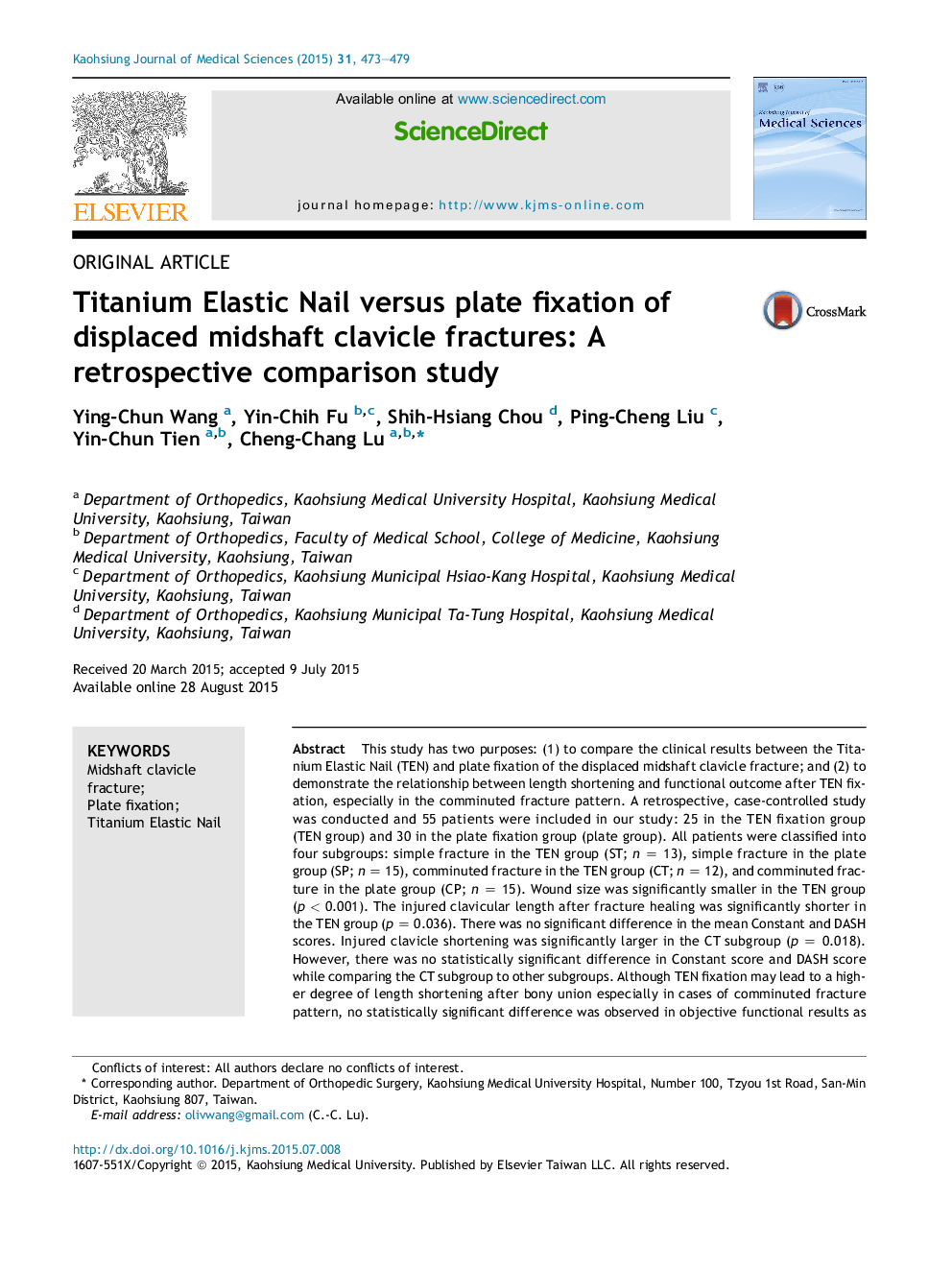| Article ID | Journal | Published Year | Pages | File Type |
|---|---|---|---|---|
| 3485274 | The Kaohsiung Journal of Medical Sciences | 2015 | 7 Pages |
This study has two purposes: (1) to compare the clinical results between the Titanium Elastic Nail (TEN) and plate fixation of the displaced midshaft clavicle fracture; and (2) to demonstrate the relationship between length shortening and functional outcome after TEN fixation, especially in the comminuted fracture pattern. A retrospective, case-controlled study was conducted and 55 patients were included in our study: 25 in the TEN fixation group (TEN group) and 30 in the plate fixation group (plate group). All patients were classified into four subgroups: simple fracture in the TEN group (ST; n = 13), simple fracture in the plate group (SP; n = 15), comminuted fracture in the TEN group (CT; n = 12), and comminuted fracture in the plate group (CP; n = 15). Wound size was significantly smaller in the TEN group (p < 0.001). The injured clavicular length after fracture healing was significantly shorter in the TEN group (p = 0.036). There was no significant difference in the mean Constant and DASH scores. Injured clavicle shortening was significantly larger in the CT subgroup (p = 0.018). However, there was no statistically significant difference in Constant score and DASH score while comparing the CT subgroup to other subgroups. Although TEN fixation may lead to a higher degree of length shortening after bony union especially in cases of comminuted fracture pattern, no statistically significant difference was observed in objective functional results as compared to other subgroups. Therefore, TEN can be used to fix a displaced midshaft clavicle fracture even in cases of comminuted fracture pattern, which overall is an effective and less surgically invasive procedure.
